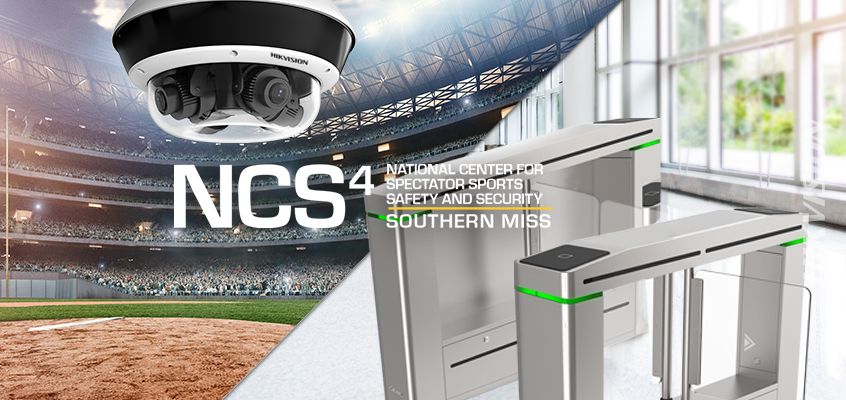Hikvision présente les caméras PanoVu, le tourniquet et la technologie de surveillance de la reconnaissance faciale à la conférence et à l'exposition nationale sur la sécurité et la sûreté du sport
Hikvision souligne la technologie d'apprentissage et de surveillance ainsi que les initiatives en matières de cybersécurité lors de la conférence annuelle sur les sports
Hikvision présente des technologies d'apprentissage et de surveillance et souligne les initiatives récentes en matière de cybersécurité lors de la neuvième conférence et exposition nationale sur la sécurité et la sûreté du sport, qui se tiendra cette semaine du 10 au 12 juillet au Downtown Marriott de Louisville.
L'événement s'adresse aux directeurs et exploitants de sécurité, aux gestionnaires des installations et des stades, aux responsables de l'application de la loi, aux gestionnaires des urgences et aux autres représentants des ligues sportives, inter collégiales ou inter scolaires, marathon / endurance et installations commerciales et de divertissement.
«La conférence nationale sur la sécurité et la sûreté du sport est une excellente occasion pour Hikvision Amérique du Nord d'exposer sa gamme de technologies aux utilisateurs finaux et aux partenaires qui ont des besoins spécifiques dans les stades et autres installations sportives», a déclaré Kristen Cory, directrice de l'A & E. Équipe de développement des affaires «Des solutions telles que les caméras PanoVu de Hikvision offrent une sélection polyvalente qui offre des vidéos haute résolution avec des vues jusqu'à 360 degrés et une technologie EXIR prolongée pour des images de haute qualité, même dans l'obscurité.» Cory ajoute que la fonctionnalité du tourniquet La technologie de reconnaissance et prolonge la portée des projets potentiels et permet à Hikvision d'offrir des solutions de sécurité complètes.
Dans la salle d'exposition au kiosque 224, l'équipe de Hikvision présentera des caméras PanoVu, un moniteur en boucle de la fonctionnalité du tourniquet et une unité de reconnaissance faciale. Le tourniquet à barrière oscillante de Hikvision s'intègre aux plates-formes d'enregistrement et de gestion vidéo Hikvision existantes, et à son terminal de reconnaissance faciale utilisant des algorithmes d'apprentissage très avancés. Le système de tourniquet personnalisable permet de passer jusqu'à 40 personnes par minute à l'aide de capteurs infrarouges intégrés. La reconnaissance faciale peut être effectuée en utilisant une photo capturée par le terminal ou téléchargée.
En plus de la technologie de surveillance, l'équipe de Hikvision mettra également en lumière les récentes initiatives en matière de cybersécurité, y compris des ressources dédiées pour les partenaires et le nouveau Centre de transparence du code source. En outre, les mises à jour du micrologiciel améliorent les performances technologiques et réduisent les menaces potentielles de cybersécurité. Le directeur de la cybersécurité d'Hikvision pour l'Amérique du Nord, Chuck Davis, a déclaré que «la mise à jour du micrologiciel est un moyen efficace de protéger l'équipement des cyberattaques et d'éliminer les vulnérabilités connues. Les mises à jour du micrologiciel sont disponibles sur le site Web de Hikvision. "
Pour plus d'informations sur la conférence, visitez ce lien.

